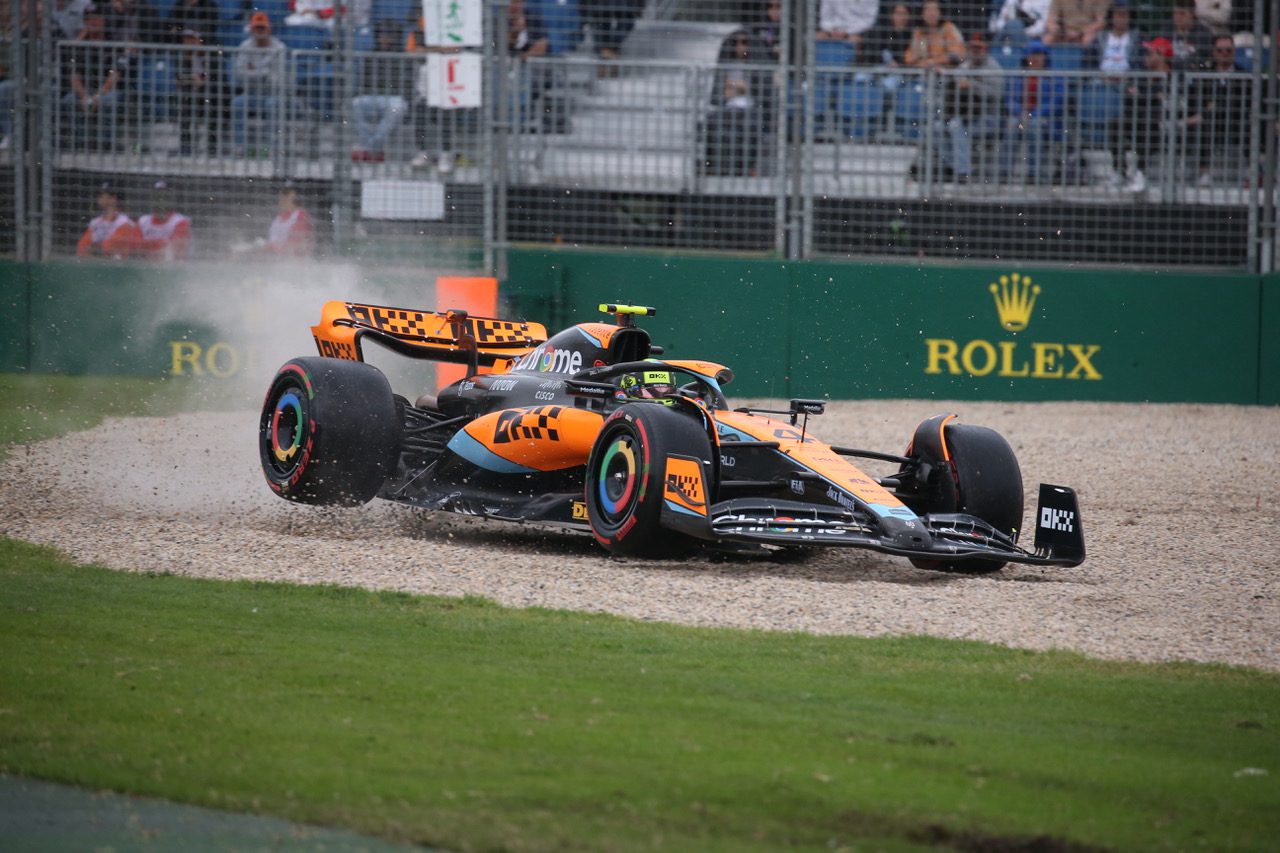Max Verstappen says too much motor racing is too much of a good thing. PETER COSTER reports:
Motor racing is “scary” replaced the usual warning that “motor racing is dangerous” as red flags stopped the Australian Grand Prix at Albert Park on Sunday.
A spectator was hit with a piece of debris that flew over the catch fence when Haas driver Kevin Magnussen hit the wall in the second of three red flag incidents..
It was a grim reminder of the accident when a track marshal was killed at Albert Park in the first grand prix of the season in 2001.
This time the spectator escaped serious injury but it was the first red flag incident that could have resulted in a fatality.
The Williams driven by Alex Albon hit the barriers at high speed before bouncing back across the track with drivers behind blinded in a cloud of gravel and dust.
The Magnussen later crash on lap 54 of the 58-lap race then brought out the third red flag.
The clearest mind in the chaotic aftermath belonged to double world champion Fernando Alonso in the leading Aston Martin.

Alonso was nudged off the track by fellow Spanish driver Carlos Sainz in the surviving Ferrari.
This led to a five-second penalty and an impassioned outburst from Sainz over team radio.
“Please, please, please, please,” cried Sainz. “This is too harsh.”
The penalty was too harsh for what was more like a racing incident but the stewards had greater concerns.
How to restart the race and in what order. Alonso, still sitting in the Aston Martin, was already casting his mind back to the race at Silverstone last year.
The red flag was brought out when the Alpha Romeo of Zhou Guanyu was left upside down behind a wall. The Chinese driver said the car’s “halo” saved his life.
As at the British Grand, the question at Albert Park on Sunday was in which order to restart the race.
Max Verstappen, the eventual winner and Lewis Hamilton in the Mercedes were first and second after the red flag.
But Alonso was no longer in third place. He was sitting at the side of the track but far from accepting that his race was over.
Stewards eventually decided the race would be restarted in the order in which they had finished the lap before the red flag.
That was because the field had not completed the first of what are regarded as three sectors of the lap and the stewards had no “reference point.”
Those left run the race followed the safety car to what was the restart of the race but also the end of the 58th lap and the chequered flag.
Alonso found himself back on the podium, third of three world champions and third once more in the first three grand prix of the season.
The Haas appealed the race decision because Hulkenberg moved up to fourth place after Fernando Alonso, Pierre Gasly, Esteban Ocon, Nyck de Vries and Logan Sargeant crashed out in the second restart.
David Croft, in a nod to Kylie Minogue who was at the race, commented, “They should be so lucky.”
At least the FIA got it right this time after the upheaval after the last lap of the last race of the 2021 season.
Australian race director Michael Masi had made the controversial decision that caused Lewis Hamilton to lose what would have been his eighth world championship.
Masi was at Albert Park on Sunday as chairman of the Australian SuperCars Commission, having been replaced by the FIA after the biggest upset in Formula One’s year history.
The former F1 race director was just another face in the crowed after the abuse and even death threats he suffered after the Abu Dhabi race Masi had no comment on the Abu Dhabi race in which he cleared lapped cars after a safety car incident leaving Verstappen to pass Hamilton on fresher tyres.
Melbourne rookie Oscar Piastri became the third Australian driver to scores points in his first home Grand Prix on Sunday when he finished eighth of the 12 cars to finish.
McLaren teammate Lando Norris was sixth after the third red flag confusion but what was clear following the Albert Park race was the “overkill” in F1.
Not a good word in motor racing, but one that describes what is overtaking F1.
Liberty Media and the Formula One Group (with the unfortunate acronym FOG) are intent on getting the biggest bang for their multi-billion investment by adding more races to an already overcrowded calendar.
Verstappen was typically forthright following the Albert Park Grand Prix.
“We are heading into seasons where we could have 34 or 25 races and if you then start adding more it is not worth it for me,” he told the media.
There are already 23 races on this year’s F1 calendar, including three in the United States.
As if this were not enough, there are six sprint races starting with the Azerbaijan Grand Prix on April 30.
“I don’t find it is in the DNA of Formula One to do these kinds of sprint races,” said Verstappen .
A normal qualifying session on Friday sets the grid for a short race on Saturday, which sets the grid for the GP instead of the traditional qualifying times.
Verstappen disagrees:
“F1 is about getting the most out of it in qualifying and having an amazing Sunday over a long race distance.
“That is the DNA of the sport and I don ’t understand why we need to change that.”
PETER COSTER is a former editor and foreign correspondent who has covered a range of international sports, including world championship fights and the Olympic Games.









Discussion about this post